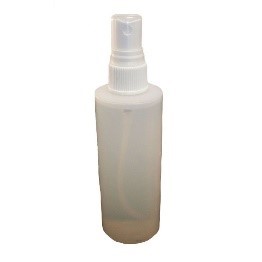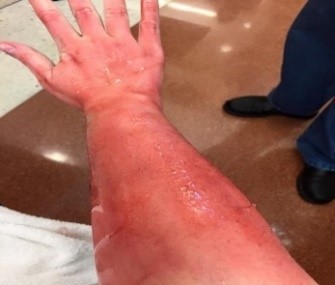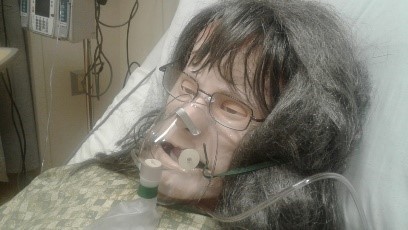Make 'Em Sweat: Creating Sweat for Medical Simulation
By: Larry Davis, Paramedic, Healthcare Educational Simulation Specialist | SimLEARN Learning Management
For those of us working as medical direct patient caregivers, we know that diaphoresis (excessive, abnormal sweating) can offer a quick sign of a patient’s condition. Recreating this on a manikin or a live actor participant can add fidelity and enhance the simulation experience for learners.
In the past, tap water, sprayed on the actor or manikin, has been used but that evaporates too quickly. Bottled glycerin drizzled on the skin can work but is messy, time-consuming, and tends to run off the skin. The SimMan 3G high fidelity manikin has a sweat feature that drizzles water down the forehead, but there are down sides to this as well: 1) It takes time to load and drain the fluid tank. 2) The water flow must be adjusted using the brass set screws under the clavicle. 3) The tiny fluid ports in the forehead tend to become easily clogged. 4) The pillowcases and sheets become quickly soaked with water (even with towels under the head).
|
So, how can you make a manikin or actor sweat quickly, easily, and safely? Try using a professional, theatrical “sweat” method designed for this task. Yep, it’s a thing and I’ve used it for years. It’s the best mixture of all options and it looks right. Theatrical sweat comes in a spray-bottle and remains a solid until sprayed, then becoming a liquid-mist. It stays put, doesn’t evaporate, cleans up easily, is safe for manikins and humans, and is inexpensive ($15 to $30 dollars for an 8oz bottle). You can find simulation sweat at DiaMedical USA, Moulage Sciences & Training (MST), HollyNorth Production Supplies, Coast Fiber-Tak Products Ltd., and other professional theatrical makeup stores. |
 Photograph courtesy of Larry Davis |
You can also make homemade sweat to save a little money. To do this, combine three parts glycerin (available at drug stores) with one part water in a dropper or spray bottle. You can enhance the effect if you apply a thin layer of cold cream before you spray the mixture on your patient. You can also use a cotton ball dipped in the mixture if you don’t have a spray bottle. It is a little more labor intensive, but you can get some pretty good results with practice.
Below are two examples I’ve done using theatrical sweat and makeup:
 Photograph by Larry Davis |
|
 Photograph by Larry Davis |
|
It is the small details in your medical sims that make a big difference in the learner’s experience. If you have any quick tips or hacks to share, send it to me at Larry.Davis10@va.gov.



















